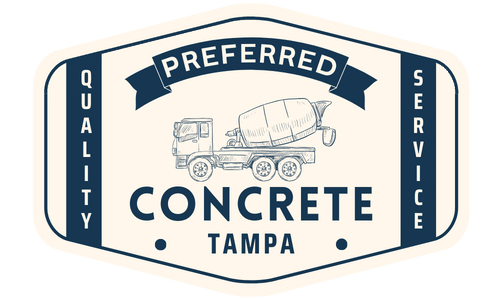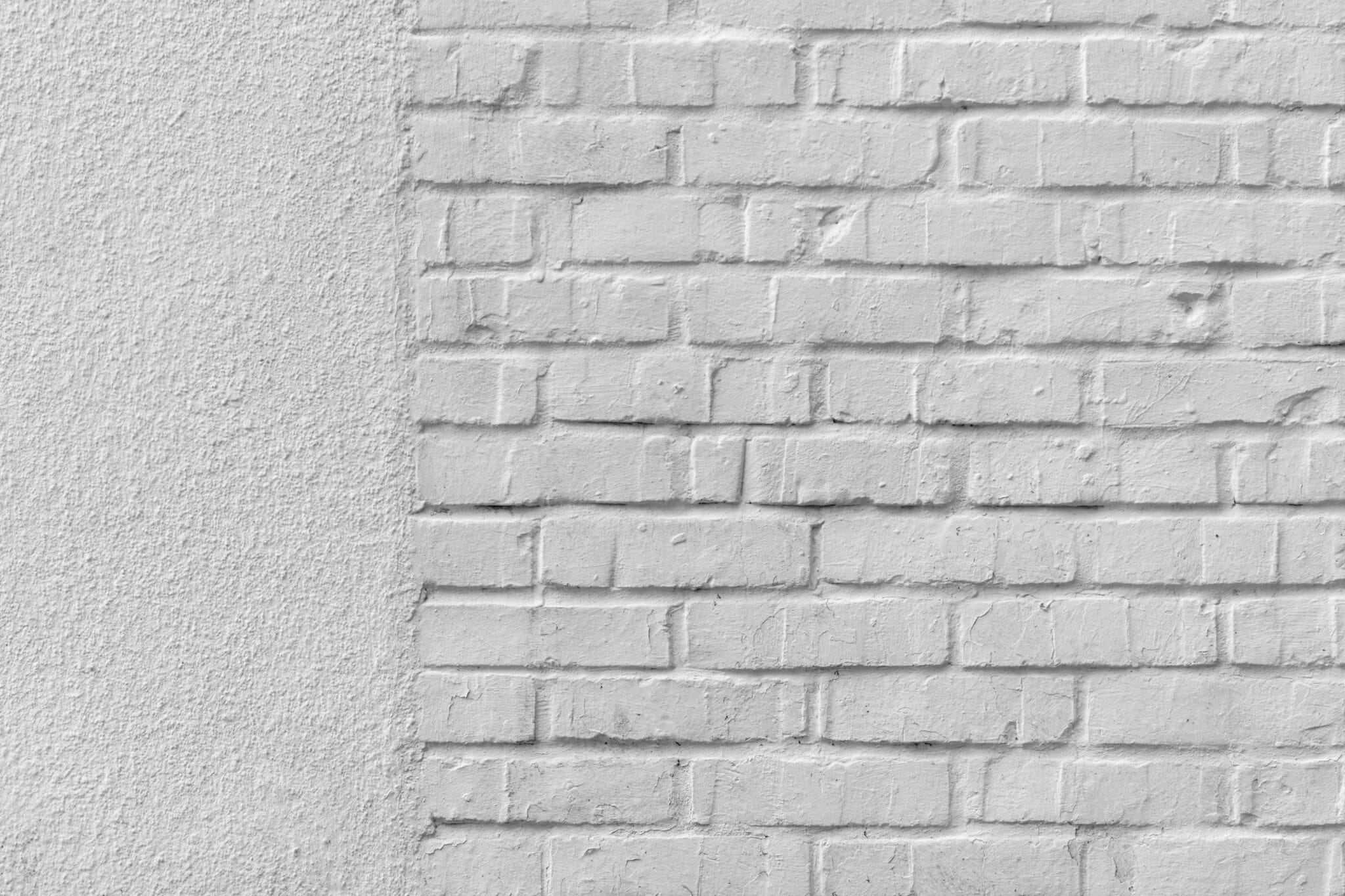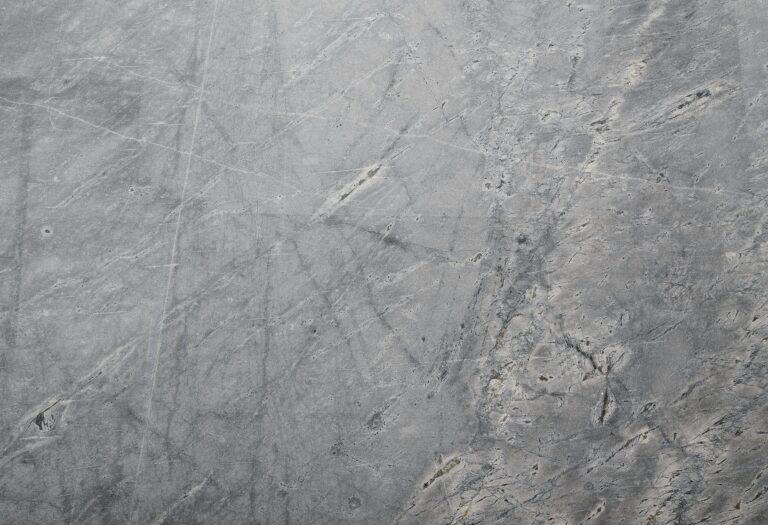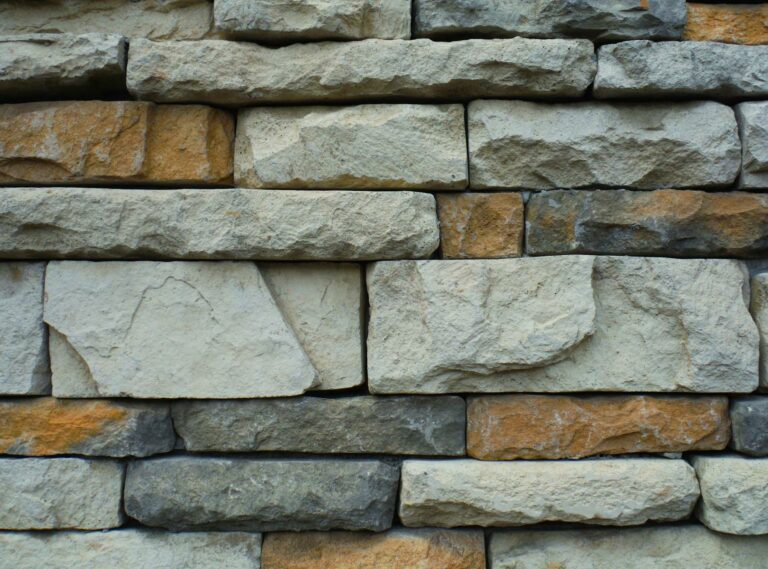Introduction to Concrete Retaining Walls
When it comes to creating sturdy structures that can hold back soil and water, concrete retaining walls are an excellent choice. These walls are specifically designed to prevent erosion and provide stability for areas with uneven terrain. In this section, we will explore what concrete retaining walls are and discuss the advantages they offer.
What Are Concrete Retaining Walls?
Concrete retaining walls are structures constructed with the purpose of retaining or holding back soil, water, or other materials on one side while creating usable and stable space on the other side. They are typically made from concrete, which is a strong and durable material that can withstand the pressure exerted by the retained materials.
There are different types of concrete retaining walls, such as concrete blocks, precast concrete panels, and poured-in-place concrete. Each type offers its own unique advantages and construction methods (Networx). By selecting the most suitable type for the specific project requirements, one can ensure a successful and functional retaining wall.
Advantages of Concrete Retaining Walls
Concrete retaining walls offer several advantages that make them a popular choice for various applications. Here are some key benefits:
Strength and Load-Bearing Capacity: Concrete retaining walls are incredibly strong and can hold up tons of earth and water. They provide the necessary support to correct the natural slope of the grounds, preventing erosion and maintaining stability.
Durability and Longevity: Concrete is known for its durability, and concrete retaining walls can often last for a century or longer. They are resistant to rot, rust, and decay, making them a long-term solution for soil retention needs.
Fireproof and Weather-Resistant: Concrete is naturally fireproof, making concrete retaining walls a safe choice. They are also resistant to road salts, freeze-thaw cycles, and harsh weather conditions, ensuring their longevity in various climates.
Design Flexibility and Aesthetics: Concrete retaining walls offer design flexibility, allowing the construction of curves, angles, or staircases with minimal difficulty. This flexibility allows for creative and visually appealing designs that can enhance the overall aesthetics of the landscape.
By understanding the advantages of concrete retaining walls, one can appreciate their strength, durability, and versatility in providing effective soil retention and stability. Whether it’s for residential or commercial projects, concrete retaining walls are a reliable choice for creating functional and visually appealing outdoor spaces.
Types of Concrete Retaining Walls
When it comes to constructing concrete retaining walls, there are three primary methods to choose from: concrete blocks, precast concrete panels, and poured-in-place concrete. Each method offers its own unique advantages and considerations, providing flexibility in choosing the right approach for your specific needs.
Concrete Blocks
Concrete blocks are a popular choice for constructing retaining walls due to their ease of installation and affordability. These blocks, also known as concrete masonry units (CMUs), are available in various sizes and shapes to accommodate different project requirements. With interlocking features, concrete blocks provide stability and strength to the retaining wall structure.
The use of concrete blocks allows for design flexibility, enabling the construction of curves, angles, or even staircases with minimal difficulty. Additionally, concrete blocks can be customized with various finishes, colors, and textures to complement the surrounding landscape, enhancing the aesthetic appeal of your retaining wall (WRAL).
Precast Concrete Panels
Precast concrete panels offer a convenient and efficient solution for constructing retaining walls. These panels are manufactured off-site and then transported to the project location for installation. Precast panels are available in a range of sizes and designs, allowing for versatility in design and customization.
The precast panels are designed to interlock, providing structural integrity and stability to the retaining wall. The installation process is relatively quick and straightforward, saving time and labor costs. Precast concrete panels are highly durable, low maintenance, and resistant to various weather conditions, making them a long-term solution for erosion control and slope stabilization (WRAL).
Poured-in-Place Concrete
Poured-in-place concrete retaining walls involve pouring liquid concrete into formwork, allowing it to cure and harden to form a solid structure. This method offers excellent strength and durability, making it suitable for projects that require a high load-bearing capacity.
Poured-in-place concrete allows for customization and adaptability to different site conditions. The flexibility in design enables the construction of curved walls and intricate details. Additionally, poured-in-place concrete walls can be finished with various textures and colors, adding aesthetic appeal to the retaining wall.
It’s important to note that constructing poured-in-place concrete retaining walls requires skilled contractors and proper formwork installation to ensure structural integrity and prevent issues such as cracking or unevenness. Professional engineering involvement is often recommended to ensure the wall meets safety standards and can withstand the intended loads.
By understanding the different types of concrete retaining walls, you can make an informed decision about which method best suits your project requirements. Whether you opt for concrete blocks, precast concrete panels, or poured-in-place concrete, it’s crucial to engage experienced professionals and follow proper installation practices for a successful and long-lasting retaining wall.
Benefits of Concrete Retaining Walls
Concrete retaining walls offer numerous benefits that make them a popular choice for various landscaping and construction projects. Let’s explore some of the key advantages of concrete retaining walls.
Strength and Load-Bearing Capacity
One of the primary advantages of concrete retaining walls is their exceptional strength and load-bearing capacity. These walls are designed to hold up tons of earth and water, making them highly suitable for correcting the natural slope of the grounds. With their sturdy construction, concrete retaining walls provide reliable support and stability.
Durability and Longevity
Concrete retaining walls are known for their durability and longevity. They are built to withstand the test of time and can often last for a century or longer. The inherent strength and resilience of concrete make it an ideal material for outdoor applications, allowing these walls to withstand various environmental conditions and remain intact for years to come.
Fireproof and Weather-Resistant
Concrete retaining walls offer excellent resistance to fire, making them a reliable choice for areas prone to wildfires. Additionally, concrete is rot-proof, rustproof, and resistant to road salts and freeze-thaw cycles in harsh winter climates (Networx). These characteristics ensure that the walls maintain their structural integrity and appearance, even in challenging weather conditions.
Design Flexibility and Aesthetics
Concrete retaining walls provide design flexibility, allowing for the construction of curves, angles, or staircases with minimal difficulty (Networx). This makes it easier to create visually appealing landscapes that integrate seamlessly with the surrounding environment. Additionally, concrete retaining walls can be customized with various finishes, colors, and textures to complement the overall aesthetic of the area.
By combining strength, durability, fireproofing, and design flexibility, concrete retaining walls offer a reliable and visually pleasing solution for a variety of landscaping and construction needs. Whether you’re looking to create terraced gardens, prevent soil erosion, or provide structural support, concrete retaining walls are a versatile choice that can enhance the functionality and beauty of your outdoor spaces.
Factors to Consider When Building Concrete Retaining Walls
When planning to build concrete retaining walls, there are several important factors to consider. Proper installation and professional contractors, foundation and base preparation, drainage considerations, and cost and customization options play a significant role in the construction and effectiveness of the retaining wall.
Proper Installation and Professional Contractors
The proper installation of a concrete retaining wall is crucial for its longevity and effectiveness. It is highly recommended to hire professional contractors with experience in building concrete retaining walls. Professionals have the expertise to ensure that the wall is constructed correctly, following proper techniques and industry standards. Their knowledge and skill will contribute to a durable and structurally sound retaining wall (WRAL). Hiring professionals is especially important if you lack experience in masonry and construction.
Foundation and Base Preparation
The foundation of a concrete retaining wall is a critical factor in its stability and strength. A strong foundation ensures the wall’s ability to withstand the pressure exerted by the retained soil. It is important to pour a concrete footing that is at least twice as wide as the wall is thick. This provides a solid base for the wall and helps distribute the weight and forces evenly (Technick). Proper base preparation, including excavation and compaction of the soil, is essential to prevent settling and shifting of the wall over time.
Drainage Considerations
Proper drainage is vital to the success of a concrete retaining wall. If water is allowed to accumulate behind the wall, it can exert additional pressure and cause the wall to fail. Installing a drainage pipe behind the wall is recommended to divert water away from the structure. Additionally, ensuring that the ground slopes away from the wall at a minimum of 1/8th of an inch per foot helps prevent water from pooling behind the wall (Technick). Adequate drainage will help maintain the integrity of the wall and prevent potential damage due to hydrostatic pressure.
Cost and Customization Options
The cost of building a concrete retaining wall can vary based on several factors, including the size of the wall, the complexity of the design, and the type of concrete used. On average, the cost ranges from $3,500 to $10,000. It is important to consider your budget and consult with professional contractors to get an accurate estimate for your specific project.
Concrete retaining walls offer design flexibility and can be customized to complement the surrounding landscape. Various finishes, colors, and textures can be applied to achieve the desired aesthetic result. When choosing materials and customization options, it is essential to consider the overall design vision and the desired look that best suits your project’s requirements.
By taking into account these key factors, including proper installation, foundation preparation, drainage considerations, and cost and customization options, you can ensure the construction of a reliable and functional concrete retaining wall that meets your specific needs. Consulting with professional contractors will provide valuable guidance throughout the process, resulting in a successful and durable retaining wall.
Common Issues with Allan Block Concrete Retaining Walls
When it comes to Allan Block concrete retaining walls, there are several common issues that may arise. It’s important to be aware of these potential problems to ensure the longevity and structural integrity of your retaining wall.
Cracking and Lack of Flexibility
One of the main issues with Allan Block concrete retaining walls is their tendency to crack, especially in freeze-thaw climates. This is due to the lack of flexibility in the material. When exposed to extreme temperature changes, the concrete may expand and contract, leading to cracks (Back 40 Landscaping). Proper installation techniques and the use of expansion joints can help minimize this issue.
Compromised Interlocking Design
Allan Block concrete retaining walls rely on an interlocking design to provide stability and strength. However, if the base is not properly prepared and compacted, the interlocking system can be compromised. This can result in structural instability and potential failure of the retaining wall. It is crucial to follow proper installation guidelines and ensure the base is well-prepared to maintain the integrity of the interlocking design.
Water Infiltration and Drainage Problems
Compared to other types of retaining walls, Allan Block concrete retaining walls are more prone to water infiltration and drainage issues. If not properly constructed or sealed, water can seep into the concrete and cause damage over time. This can lead to weakening of the structure and potential failure. It is essential to address proper drainage during the installation process to prevent water-related issues.
Fading Color and Regular Maintenance
Over time, the color of Allan Block concrete retaining walls may fade, resulting in a less aesthetically pleasing appearance. This can be a concern for those who prioritize the visual appeal of their retaining walls. Regular maintenance, such as cleaning and sealing, can help mitigate color fading and keep the walls looking their best. It is important to follow the manufacturer’s recommendations for maintenance to ensure the longevity and appearance of the retaining walls.
Being aware of these common issues with Allan Block concrete retaining walls can help you make informed decisions when planning and constructing your retaining wall. It is recommended to consult with a professional contractor who is experienced in working with concrete retaining walls to ensure proper installation and address any potential challenges that may arise. Regular inspections and maintenance can also go a long way in preserving the integrity and appearance of your retaining walls.
Design and Construction Considerations for Concrete Retaining Walls
When it comes to building concrete retaining walls, there are several important design and construction considerations that need to be taken into account. These factors play a crucial role in ensuring the structural integrity and longevity of the retaining wall.
Importance of a Strong Foundation
The foundation of a retaining wall is of utmost importance. Without a strong and stable foundation, the wall will eventually fail. It is essential to pour a concrete footing that is at least twice as wide as the wall is thick. This provides a solid base and helps distribute the weight of the wall evenly. By having a strong foundation, the retaining wall can withstand the pressure exerted by the soil behind it and maintain its stability over time.
Proper Drainage Systems
Proper drainage is a critical consideration when constructing a retaining wall. If water is allowed to build up behind the wall, it can exert additional pressure on the structure and compromise its stability. To prevent this, it is essential to install a drainage pipe behind the wall. This pipe will help redirect water away from the wall, minimizing the risk of hydrostatic pressure buildup. Additionally, ensuring that the ground slopes away from the wall at a minimum of 1/8th of an inch per foot aids in proper drainage (Technick).
Choice of Material
The choice of material for the retaining wall is another important consideration. Concrete blocks are a popular choice due to their strength and durability. However, it’s important to ensure proper installation to avoid cracking. Stone or brick can also be used, but they may be more expensive. The choice of material depends on factors such as budget, desired aesthetics, and the specific requirements of the project. Consulting with a professional can help determine the most suitable material for the retaining wall.
Professional Installation and Regular Inspections
Building a concrete retaining wall requires expertise and experience. Unless you are an experienced mason, it is advisable to hire a professional for the installation process. Professionals have the necessary knowledge and skills to ensure that the wall is built correctly and will withstand the test of time. Additionally, regular inspections of the retaining wall are essential to identify any signs of damage or deterioration. Prompt repairs and maintenance can help prevent further issues and prolong the life of the retaining wall (Technick).
Taking these design and construction considerations into account when building a concrete retaining wall is crucial for its long-term stability and functionality. By ensuring a strong foundation, proper drainage, selecting the appropriate material, and relying on professional expertise, you can have a well-built retaining wall that effectively serves its purpose for years to come.
Different Types of Retaining Walls and Their Functions
When it comes to retaining walls, there are several types to choose from based on your specific needs and project requirements. Let’s explore the different types of retaining walls and their functions:
Gravity Retaining Walls
Gravity retaining walls rely on their own weight and mass to resist pressure from soil. These walls are typically thicker and do not require extensive reinforcement. The key function of gravity retaining walls is to provide stability and prevent soil erosion. They are commonly used in situations where the height of the wall is relatively low and the soil pressure is moderate.
Cantilever Retaining Walls
Cantilever retaining walls are constructed of reinforced concrete and consist of a relatively thin stem and a base slab. The base is divided into two parts: the heel and the toe. The heel is the part of the base under the backfill, while the toe is the other part. Cantilever retaining walls are designed to resist lateral pressure from soil using the leverage principle. They are widely used in various applications, including residential, commercial, and infrastructure projects.
Counterfort Retaining Walls
Counterfort retaining walls are similar to cantilever walls but have thin vertical concrete webs, known as counterforts, at regular intervals along the backside of the wall. These counterforts provide additional strength and stability to the wall, allowing it to withstand higher soil pressures. Counterfort retaining walls are commonly used in situations where the height of the wall exceeds the practical limit for a cantilever wall. They are often employed in large-scale projects such as highways and bridges.
Gabion Retaining Walls
Gabion retaining walls are constructed of stone-filled gabions tightly attached to wire. These walls are frequently slanted and are commonly used to prevent erosion on river banks, beaches, highways, and other sloped areas. Gabion walls offer excellent flexibility and drainage capabilities, making them suitable for projects where soil erosion and water management are major concerns. They are also known for their aesthetic appeal, as they can blend in well with natural surroundings.
By understanding the different types of retaining walls and their specific functions, you can make an informed decision about which type is best suited for your project. It is important to consult with a professional concrete contractor to assess your specific needs and ensure the proper design and construction of your retaining wall. For more information on concrete services, such as concrete patios, concrete driveway, concrete flooring, and stamped concrete, reach out to our team of experts.
Key Factors in Building Retaining Walls
When it comes to constructing concrete retaining walls, there are several key factors to consider to ensure a successful and durable structure. These factors include professional engineering involvement, suitable location and drainage planning, base soil quality and geotechnical reports, as well as maintenance and repairs.
Professional Engineering Involvement
For retaining walls over a certain height, professional engineering involvement becomes crucial. Walls over 3 feet high may require the expertise of a professional engineer, and walls over 4 feet high usually require professional engineer (PE) design. Engaging a professional engineer ensures that the wall is designed and constructed to meet structural requirements, taking into account factors such as soil conditions and load-bearing capacity. Their expertise helps ensure the safety and stability of the retaining wall.
Suitable Location and Drainage Planning
Choosing a suitable location for the retaining wall is paramount. Factors such as the slope of the land, proximity to existing structures, and the purpose of the wall should be considered. Additionally, proper drainage is crucial to prevent water buildup behind the retaining wall and avoid failures. It is advisable to consult with a professional engineer to inspect the site for drainage patterns and design an appropriate drainage system. This helps to ensure that water does not accumulate behind the wall, which can cause pressure and compromise its integrity (78 Fence).
Base Soil Quality and Geotechnical Reports
The foundation of a retaining wall is of utmost importance. Without a strong foundation, the wall is susceptible to failure. It is recommended to pour a concrete footing at least twice as wide as the wall is thick to provide sufficient stability and support. Assessing the base soil quality is crucial for determining the appropriate foundation design. Conducting geotechnical reports can provide valuable insights into the soil composition and its load-bearing capacity. This information helps in designing a retaining wall that can withstand the forces exerted by the soil and ensure its long-term structural integrity (Technick).
Maintenance and Repairs
Proper maintenance and regular inspections are essential to keep the retaining wall in optimal condition. Regularly inspecting the wall for cracks or other damage and promptly repairing any issues found can help prevent further deterioration and ensure its longevity. Hiring a professional to perform inspections and repairs is recommended, as they have the experience and expertise to identify potential issues and address them effectively (Technick).
By considering these key factors, you can ensure the successful construction of a durable and reliable concrete retaining wall. Engaging professional engineering services, planning suitable locations and drainage, assessing the base soil quality, and performing regular maintenance and repairs all contribute to the long-term functionality and stability of the retaining wall.
Design and Construction Considerations for Concrete Retaining Walls
When it comes to designing and constructing concrete retaining walls, there are several key factors that need to be taken into consideration. These factors play a crucial role in ensuring the strength, durability, and longevity of the retaining wall.
Importance of a Strong Foundation
The foundation of a concrete retaining wall is of utmost importance. Without a strong foundation, the wall can eventually crumble and fail. It is essential to pour a concrete footing that is at least twice as wide as the wall is thick to provide a stable base for the wall (Technick). The foundation should be properly compacted and reinforced with steel bars to enhance its strength and stability.
Proper Drainage Systems
To prevent water buildup behind the retaining wall, proper drainage systems must be implemented. If water is allowed to pool behind the wall, it can exert excessive pressure on the structure and eventually cause it to collapse. Installing a drainage pipe behind the wall helps to redirect water away from the wall and prevent hydrostatic pressure from building up. Additionally, ensuring that the ground slopes away from the wall at a minimum of 1/8th of an inch per foot aids in effective water drainage.
Choice of Material
Concrete retaining walls are known for their strength and load-bearing capacity. They can withstand high amounts of pressure and provide a stable support system for areas with steep slopes or unstable soil conditions. However, the choice of material for the retaining wall is crucial. Concrete blocks, precast concrete panels, and poured-in-place concrete are common options to consider. Each type has its own advantages and should be chosen based on the specific requirements of the project.
Professional Installation and Regular Inspections
Proper installation is vital for the longevity and effectiveness of a concrete retaining wall. It is recommended to hire a professional contractor with experience in building concrete retaining walls to ensure that proper construction techniques are followed. Professionals have the expertise to understand the specific needs of the project and can ensure that the wall is built correctly, adhering to industry standards and local regulations.
Regular inspections of the retaining wall are essential to identify any signs of damage, such as cracks or other structural issues. Promptly repairing any damage found is crucial to maintain the functionality and longevity of the retaining wall. Regular maintenance and inspections help to ensure that the retaining wall continues to perform its intended function effectively.
By considering these important design and construction factors, you can ensure that your concrete retaining wall is built to withstand the test of time. A well-designed and properly constructed retaining wall not only provides structural stability but also enhances the overall aesthetics of the landscape. If you’re interested in exploring other concrete services, such as concrete patios, concrete driveways, concrete flooring, or stamped concrete, we have a wide range of options to suit your needs.




